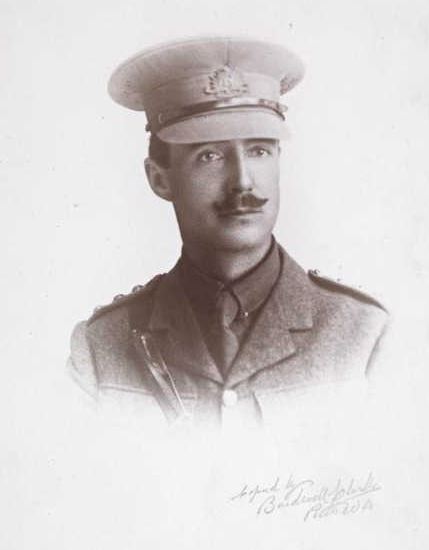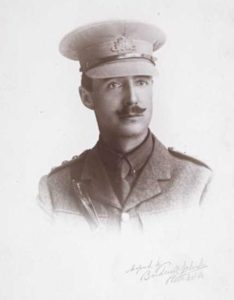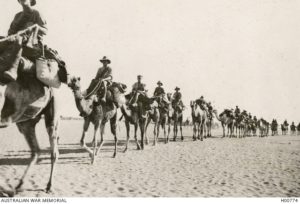Captain William John Rae, 3rd Battalion Imperial Camel Corps, was killed on 27 March 1917 at El Mandar near Gaza, Egypt. This was his first time under fire. He was standing speaking to another officer 1600 yards from the enemy line when he was hit in the groin by the nose cap of a shell. According to the Australian Red Cross Society Wounded and Missing Enquiry Bureau files, over a dozen of his men reported that he did not die immediately but rather was taken to the Dressing Station and died later that day. Reports of his burial are vague but most agreed that it was in the wadi behind the Dressing Station. Supposedly the grave was marked with a white cross but this could not be located a couple of weeks later.
William Rae enlisted in Fremantle, Western Australia, on 19 August 1915 at the age of 43, having already spent two years in the Civil Service Corps (4th Battalion in Western Australia). At this time his rank was 2nd Lieutenant. He embarked via HMAT Hororato A20 on 1 October 1915, and was seconded to the Imperial Camel Corps on 20 February 1916. He was promoted to Lieutenant on 21 March 1916 and then to Temporary Captain whilst commanding the Base Depot ICC in October 1916, his duties being Paymaster and Details Captain. By January 1917 he was full Captain and charged with establishing the command Base Depot for Company 3 in Abbassia. In February 1917 he was attached to the Australian Reserve ICC at El Arish.
William John Rae was the eldest son of William Allwood and Florence Rae of Glenroy, Bathurst Road, Orange. He was born in Swan Hill, Victoria, on 11 June 1872. His family had moved from Forbes when his father took up a position as a licenced surveyor in the Orange district. Two of his brothers, George Huntley Rae, and Norman Dunstan Rae also joined the AIF and saw service overseas. On enlistment William Rae gave his occupation as a licenced surveyor and place of residence as Albany, Western Australia. He had married Nora Mitchell in 1903 in Bunbury and, according to the newspaper report of his death, had four children.
William’s parents were actively involved in the war effort in Orange. Florence, his mother, made jams for the Red Cross and according to the Orange Leader in June 1915 his parents had placed their home at the disposal of wounded New South Wales heroes, offering to take up to eight soldiers. They were the first family in the district to do so and the second in western New South Wales.
Captain William John Rae was held in high regard in his home town of Albany. The Mount Barker and Denmark Record documents a meeting of the Toc H at the Albert Hall on 21 June 1930 where “The Rae Lamp” was “kindled into flame” for the first time. The lamp was dedicated to the memory of the Captain.
Captain William John Rae is commemorated on the Holy Trinity Church Orange Honour Roll, the WWI Roll of Honour on the southern face of the Orange Cenotaph, and on panel 59 of the Jerusalem Memorial in Israel. In 1923 the Anzac Memorial Avenue of trees was planted along Bathurst Road to commemorate fallen WWI soldiers. One was planted in honour of “Capt WJ Rae” and was donated by J Nancarrow. Very few of the trees are still standing today.
* Sharon Jameson, August 2018



